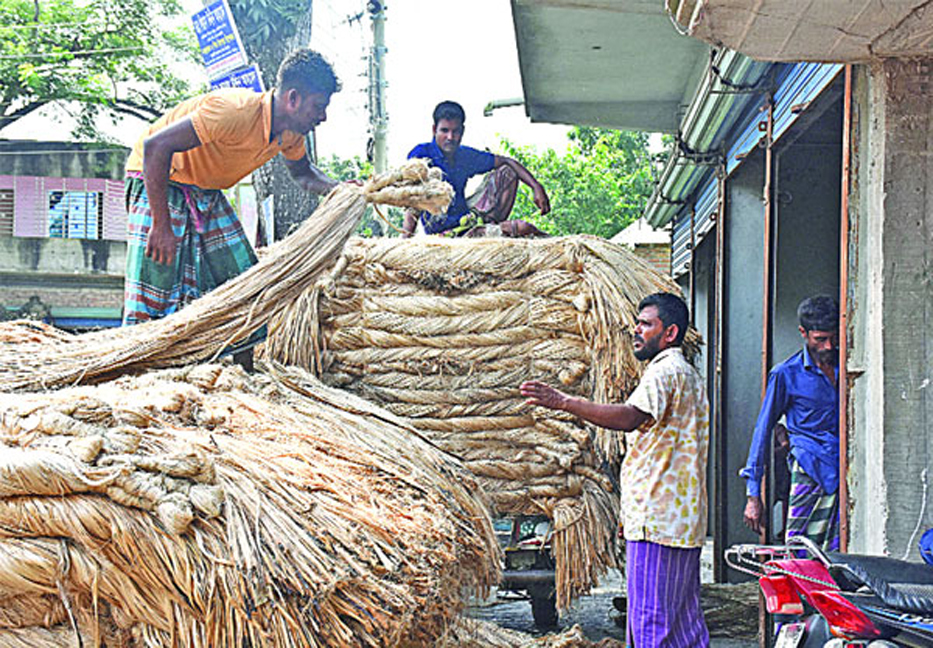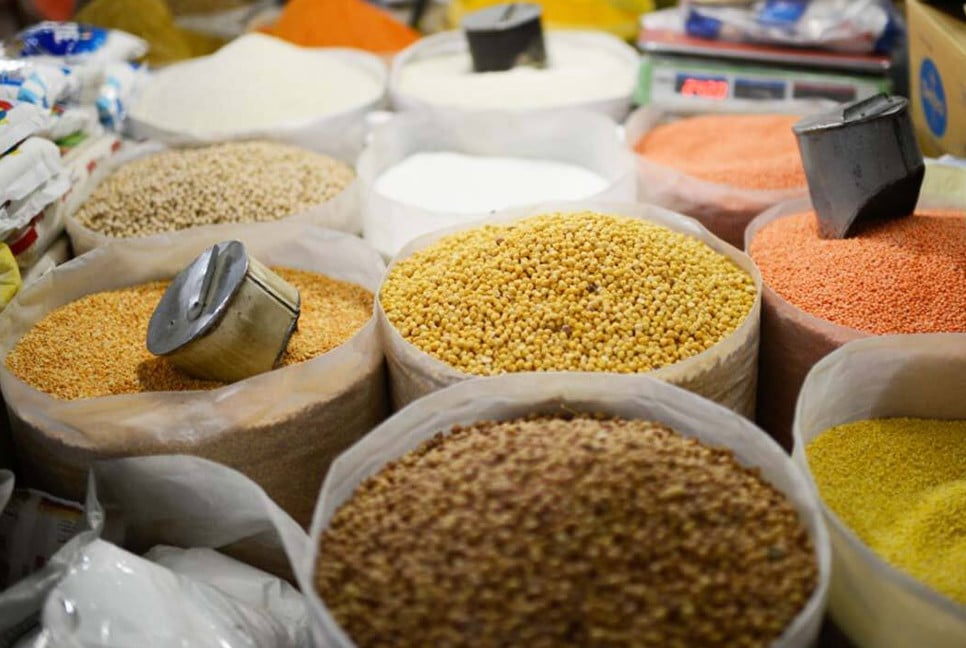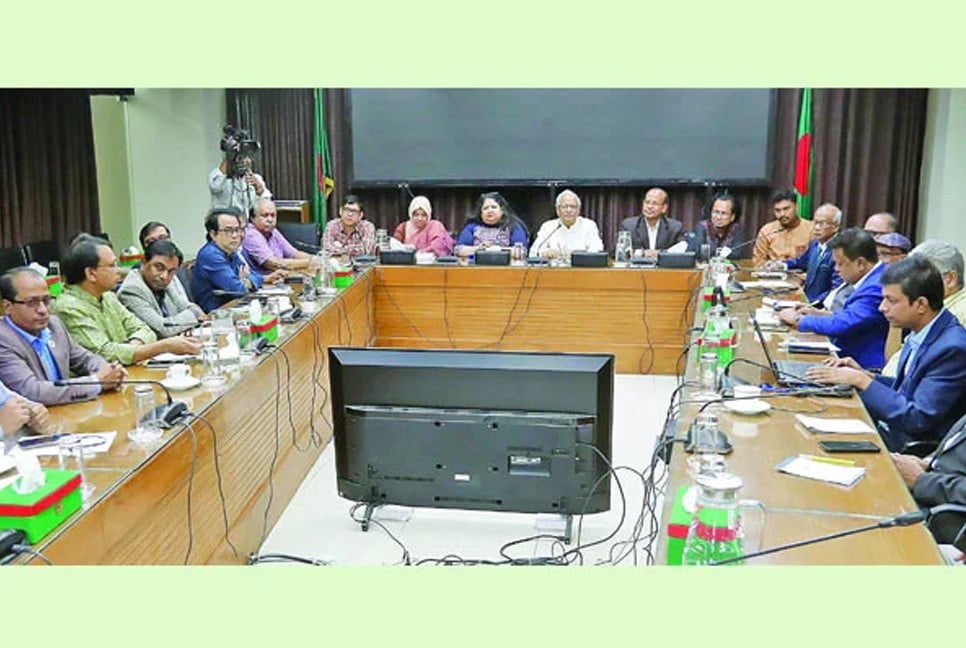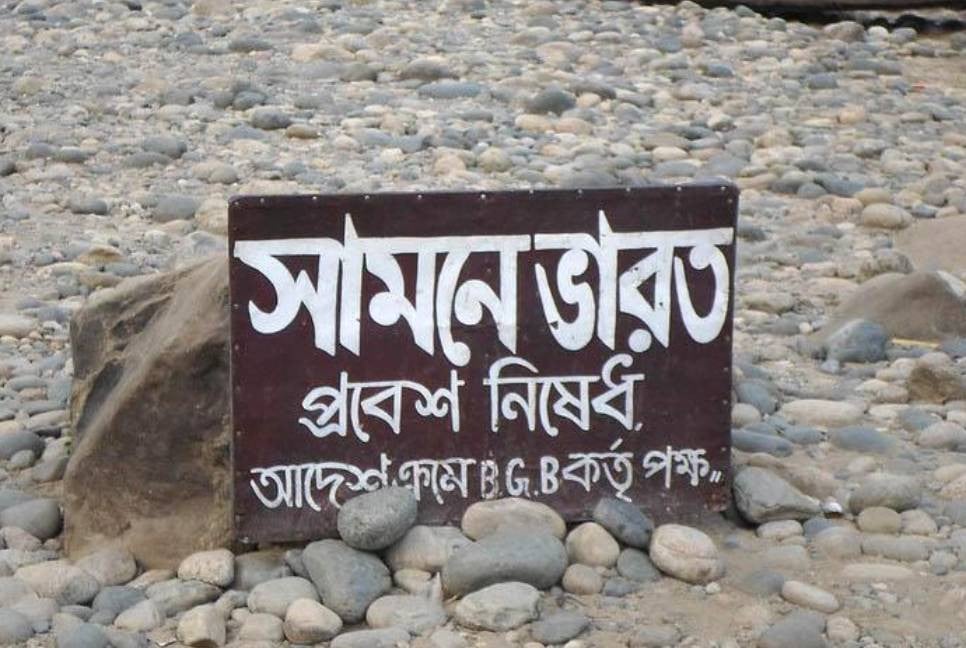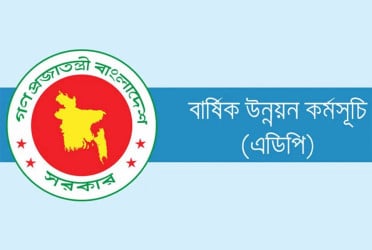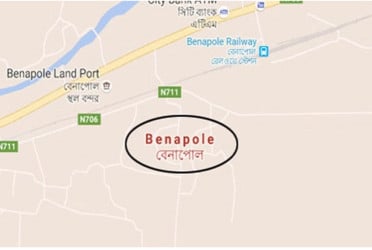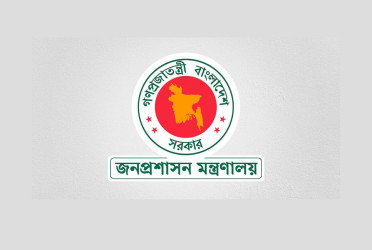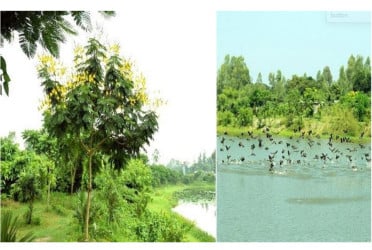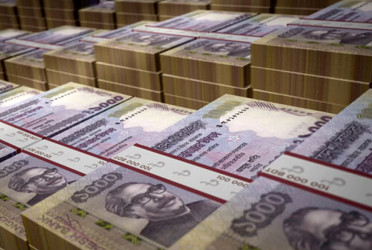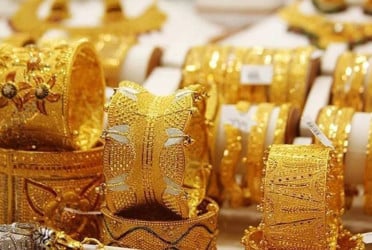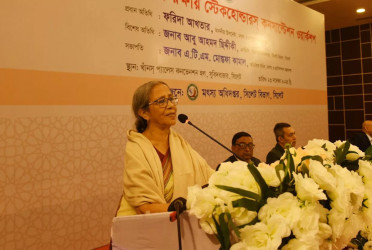The jute, which was once regarded as ‘The Golden Fiber,’ now has become the headache for the farmer engaged in its cultivation. The possibilities of this industry that were created in past years have becoming faded away to the exporters day by day. Farmers of many districts of the country are losing interest in its cultivation due to loss they suffered from its production and sales.
The farmers told The Bangladesh Pratidin due to less rainfall, hike of irrigation and other production related costs, this year the production of Jute has been reduced. They are disappointed for not getting a good price of their products. The more alarming is the situation that due to the reduction of demand of jute products in international market, the export of jute is also reduced.
The government declared jute products as the 'Product of the year' for 2023. The aim was to increase the export of jute products to various countries including those of Europe by improving the internal market management. But this year the farmers are unhappy with the quality and price of jute. They are tensed that something more negative will happen to exports with the value of jute this year. Export earnings from jute yarn and twine also declined.
According to the Jute Department, the total production of raw jute in 2017-18 was 92 lakh bales. And in 2021-22 it decreased to 71 lakh bales. Export of raw jute was 14 lakh bales in 2017-18 and 8 lakh bales in 2021-22. Currently, buyers from different countries are buying products made of cotton and silk instead of jute. The demand for jute products in abroad has decreased by 25 to 30 percent. The price is not the same as before. Experts told The Bangladesh Pratidin that we once had a big jute market in the world. This market is now in the hands of other countries including India. About two and a half hundred private jute mills of the country have to come forward to capture the jute market. These jute mills can plan to export products to countries where jute products are in demand.
Farmers are losing interest in farming: According to the information provided by the representative of Jaipurhat, the agricultural extension department of the district is worried that this year the production target will not be achieved like last season. The amount of jute cultivation in the district has decreased due to various reasons including increase in irrigation cost, increase in cost of production, increase in price of materials, and insufficient rain. Agricultural experts say that many farmers have turned to the cultivation of other crops including vegetables. All together the farmers of the district are losing interest in jute cultivation day by day.
According to the District Agriculture Extension Department, the target for jute cultivation in the district was set at 3,570 hectares in the current season. But cultivation has been done in 3,118 hectares. In other words, jute cultivation in 452 hectares of land is less than the targeted amount. Farmer Solaiman Ali of Nizampur village in Joypurhat Sadar Upazila has grown jute on 33 khata i.e. 55 hundred acres of land. He said, "In this season, the cost of jute cultivation has increased. Like every year, Tk 16-17 thousand have been spent for tillage, labor wages, fertilizer-irrigation and other expenses for 1jute cultivation in 1 bigha of land. And this year due to lack of suitable weather, cultivation did not go well. Furthermore, the market price of jute is also low. I sold some jute at the price of TK 1, 600 taka. Jute cultivation cannot be done by selling it at this price as in every bigha now 8 to 9 maunds of jute will be produced. Its price will be Tk 15-16 thousands. A loss of one to Tk one and a half thousand will be occurred in this way.
Abdul Halim, chief inspector of the district office of the jute department, said last year, many jute traders stocked up after buying jute. The price of jute is low this year and for this traders are also buying less jute.
Farmers are worried about the price: Faridpur district is in the top position as always in jute production. However, this year the smile on the face of the farmer has faded away due to the adverse behavior of nature. On the one hand, jute cultivation has been disrupted due to heavy rains at the beginning of the season, on the other hand, due to the lack of water, the expected yield is disrupted due to lack of water. Because of the loss of color of jute due to soaking in little water, the price of jute is also low in the market. Due to the acute labor crisis, the wages of the workers have also increased. Currently, a worker has to pay a daily wage of Tk 700 to Tk 800 with two meals a day. Apart from this, the cost of production of Jute has increased several times due to the increase in the prices of fertilizers, irrigation and pesticides. But the farmer is not getting the price of jute in that proportion. This year, good quality jute is being sold at Tk 2,700 to Tk 2,800 per maund, whereas this jute was sold by the farmer at the beginning of last year for Tk 3, 400 taka last year. Going to Kanaipur weekly market, the biggest jute market in Faridpur, it can be seen that even though farmers bring jute, traders are not showing much interest in buying jute. Hence, the farmers are selling jute at a lower price due to scarcity of buyers.
Jute farmer's are at stake: In Pabna, one of the country's jute producing districts, farmers are worried due to low prices despite good yield. Due to the closure of government and private jute mills, they are worried and disappointed about getting the right price. Abdul Awal, a farmer of Islampur village in Pabna Sadar, said, "I have been washing jute all day in this rotten water, but this work is in vain. Only costs may arise from this and we don’t get the profit. Abdul Bari of Goeshpur village of Pabna Sadar said that farmers sold jute at Tk 2,500 to Tk 3,000 per head last year but now it has decreased by Tk 1 to Tk 1500 to below Tk 2,000. The once golden scales have now become a noose around the farmer's neck.
Decreasing export earnings: In the fiscal year 2020-21, the sector exceeded all previous records by exporting jute and jute products worth 116.15 million (1.16 billion) dollars, leaving leather behind in the list of product exports. Earlier, jute exports increased by 31.63 percent compared to the fiscal year 2019-20. Seeing this, the target of export earnings from the jute sector in the financial year 2021-22 was raised to 142 million dollars. But within a year, the jute sector has come down to the fifth place. In the fiscal year 2021-22, foreign currency worth 112 million dollars came to the country from this sector. Income is 20.60 percent less than the target. The situation is worse in the current financial year 2022-23. In the first six months of this fiscal year (July-December), the exporters exported jute and jute products worth 485.9 million dollars, which is 17.65 percent less than this period of last financial year, and more than 19 percent less than the target. During this period, the export of raw jute decreased by about 11 percent. The income of 10 crore 93 lakh 40 thousand dollars has been earned by exporting various handmade products made of jute and jute yarn. The growth has decreased by 13.34 percent. Jute mill owners and exporters say that the demand for jute products in the international market has decreased and the demand for poly fiber has increased. Due to this, the price of jute products has decreased by 25 to 30 percent. As a result, exports also collapsed. It is feared that if the demand of jute products does not increase in the world market, the price will not increase.
Apprehension about jute mills: On July 2, 2020, the government closed 26 state-owned jute mills in the country. Although the factory promised to pay all the dues of others including the workers within two months of the shutdown, many workers have not yet received their dues including the area. General Manager (Administration and Service) of Bangladesh Jute Mills Corporation (BJMC), Nasimul Islam told The Bangladesh Pratidin, 'Our mills are closed now. We are giving these to the private sector. All the 25 jute mills under our control have now stopped production. Out of 25 jute mills, we have taken up leasing of 19, of which 16 have gone to the lease stage. And no decision has been taken regarding the remaining five jute mills. The dues of the workers of our closed jute mills have been fairly paid. Some mills have complications related to litigation.”
About 20 percent of the country's total export of jute and jute products comes from Akij Jute Mills, one of the largest jute mills in the world. But the factory has been in turmoil for months. Production has been reduced due to lack of foreign purchase orders and rising production costs.
(The report was assisted by Pabna Correspondent Saikat Afroz Asad, Joypurhat Correspondent Md. Shamim Qadir and Faridpur Correspondent Kamruzzaman Sohel. It was published in Bengali on print and online versions of The Bangladesh Pratidin on September 14 and rewritten in English by Lutful Hoque)

